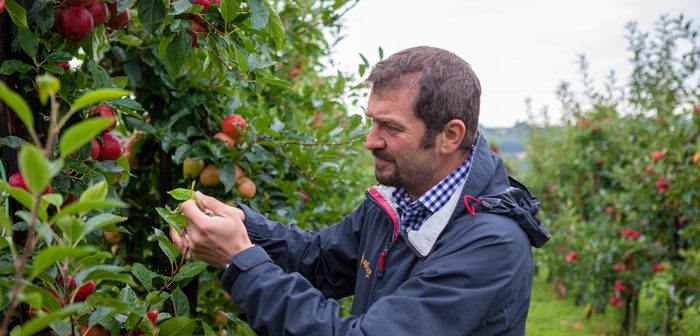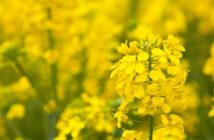Fruit growers are encouraged to monitor infection risk and implement preventative measures in orchards where scab levels built-up due to last season’s wet harvest.
Where scab was present at the end of August, the wet and mild weather and extended picking period allowed the disease to increase in severity during harvest, as well as leaf senescence.
Continued adverse autumn weather also meant that opportunities to reduce inoculum by sweeping and pulverising, or applying urea, will have been limited.
Technical manager for Agrovista Fruit, Alex Radu, said: “In some orchards, leaf litter is still present on the ground that just hasn’t had time to decompose before the start of the new season.
“This means substantial levels of inoculum have overwintered, and with few cultural control options available due to ground conditions, preventative programmes should start as soon as primary scab risk becomes significant and it is possible to travel in orchards.
“As we are experiencing a mild, wet February, the start of ascospore dissemination is imminent and infection risk is bound to become significant soon.”
In spring, overwintered scab spores, ascospores or conidia, are released during rainfall. If foliage remains wet, infections will start to develop on new leaves and fruitlets, if fungicide cover is inadequate.
Effective spray application and coverage are crucial at the beginning of the season, to prevent the development of primary lesions.
One tool available to help assess potential scab risk is the Growers Choice Interactive (GCI) pest and disease modelling service. GCI supplies subscribers with live models based on accurate and regularly monitored weather data, ensuring timely and effective use of plant protection products.
Mr Radu added: “One benefit of GCI in terms of scab risk specifically, is that users can access a spray coverage calculator, which informs of the level of cover from a fungicide application.
“Monitoring is key, not only to know when significant infections are taking place, but to also avoid unnecessary product applications. GCI sends text messages to growers to alert them when the risk is high so product timings can be perfected.
“GCI is also supported by Agrovista Fruit agronomists, so in-person expertise is only a phone call away. It’s no doubt that this is going to be a challenging year and we want growers to be scab vigilant, but we also want to ensure that they are optimising their inputs and therefore reducing residue levels.”
For more information about managing scab control programmes, or about GCI, visit www.agrovista.co.uk/growers-choice-interactive or contact enquiries@agrovista.co.uk




